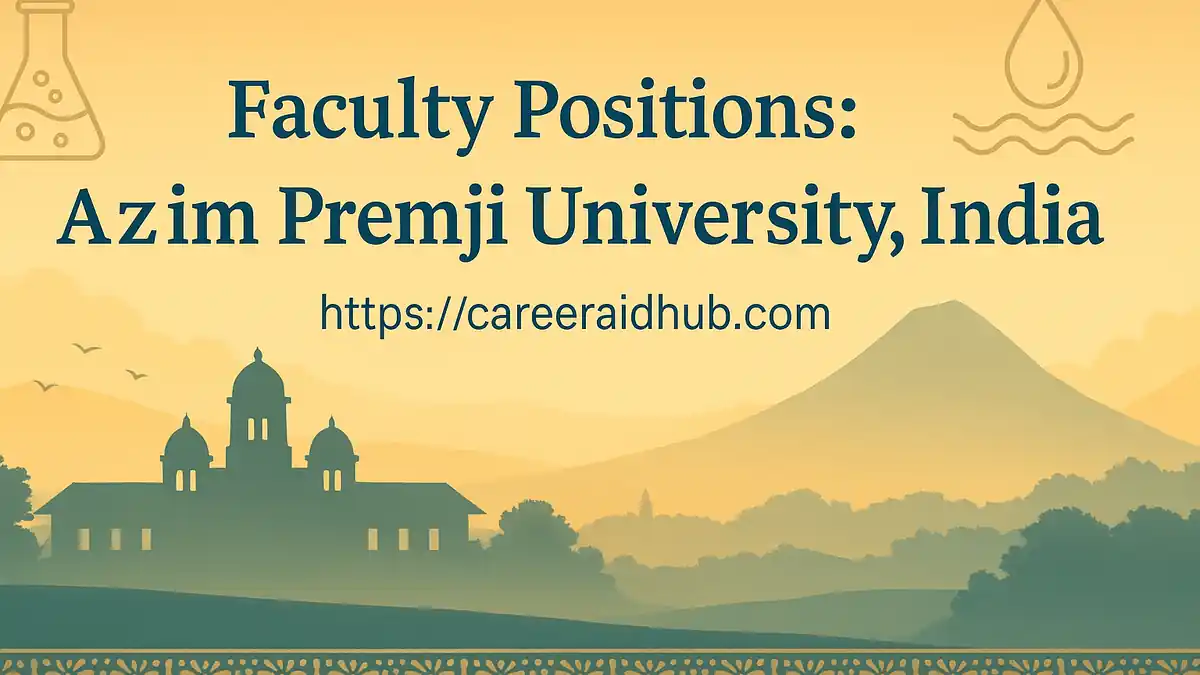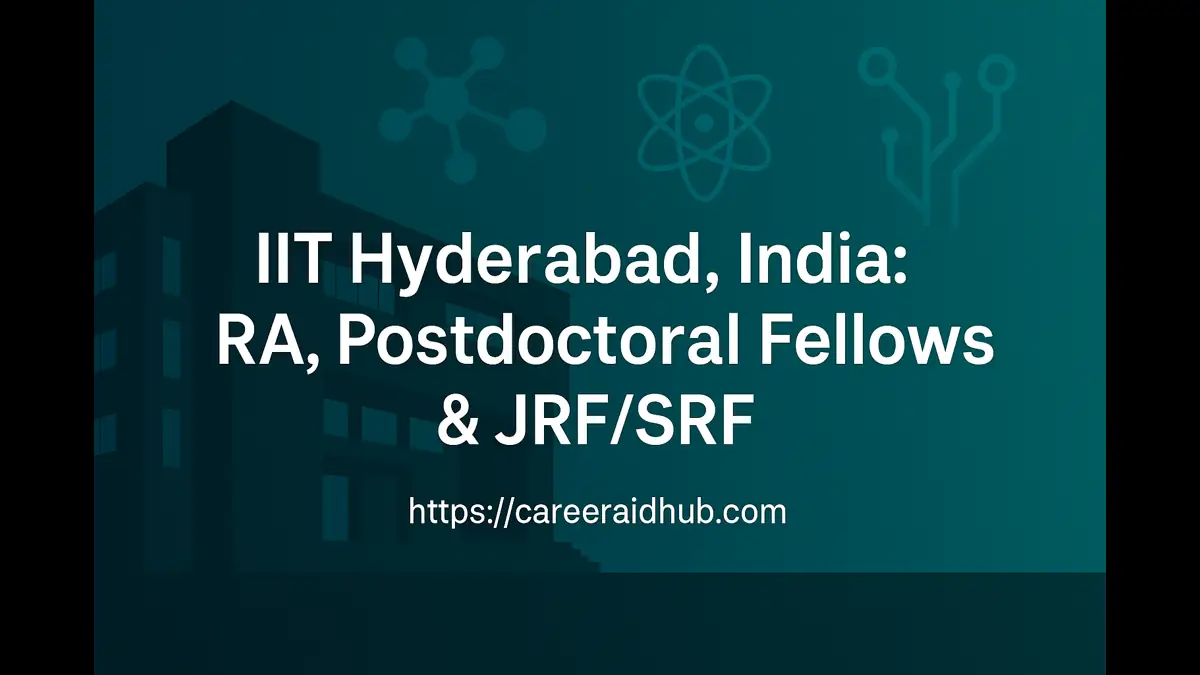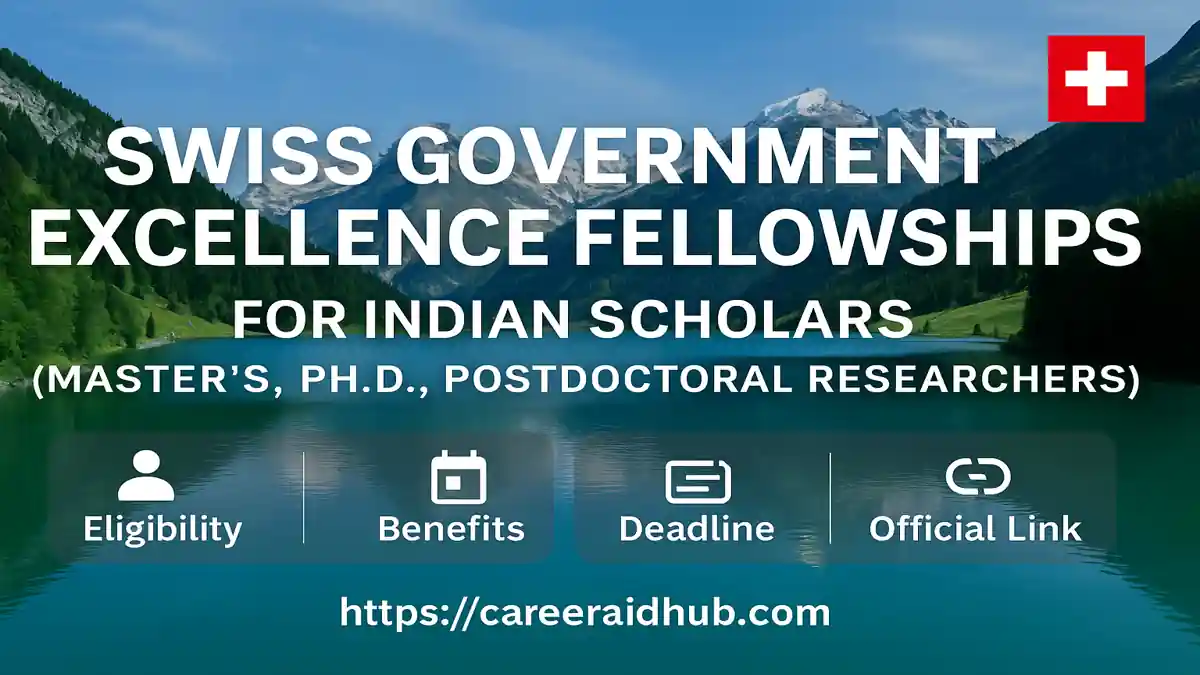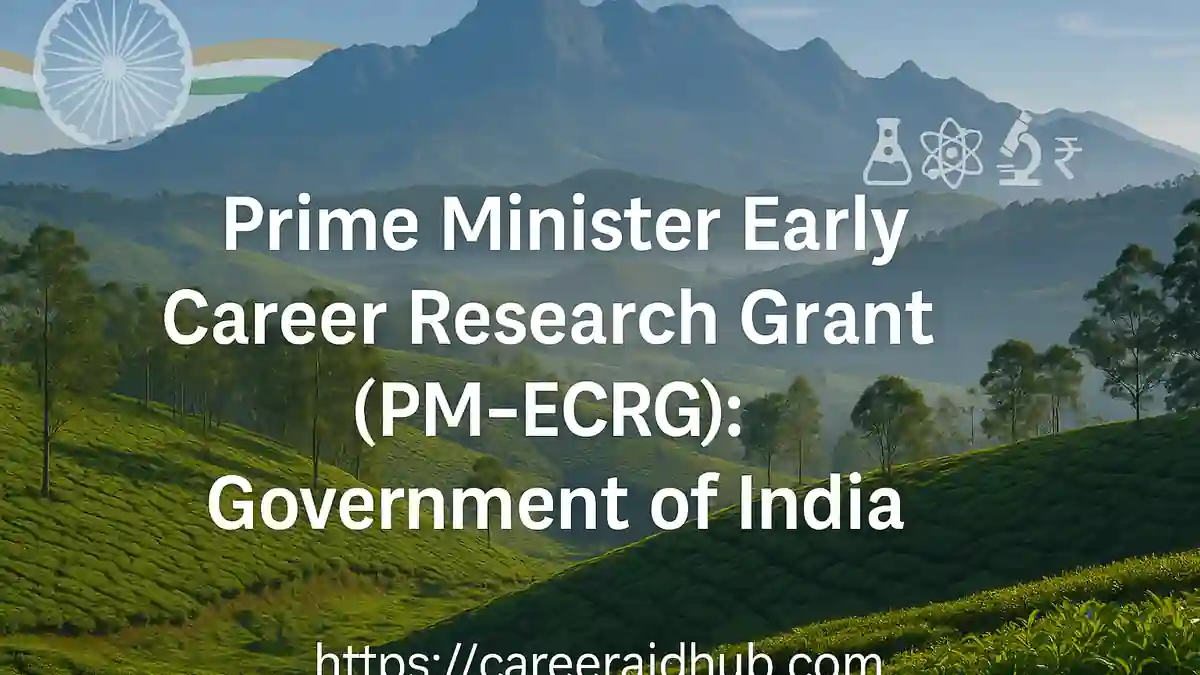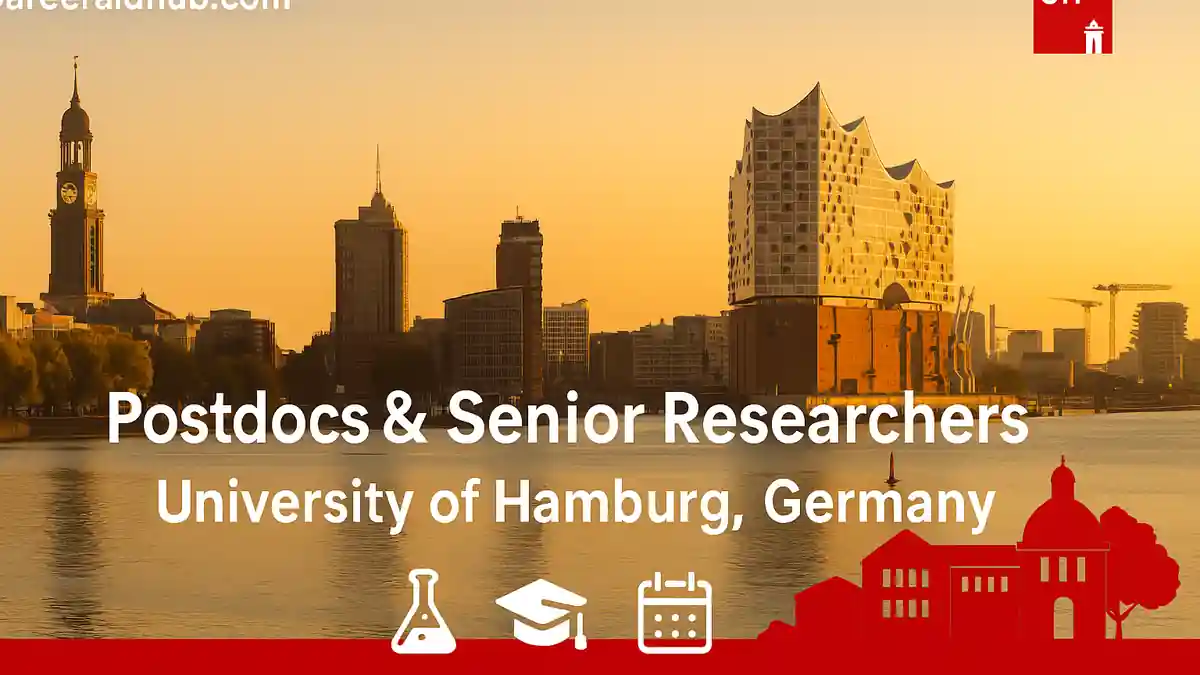Faculty Positions in Environmental Science (Pollution Focus) — Bengaluru
Are you passionate about clean air, safe water, and resilient soils—and equally committed to teaching the next generation how to safeguard them? This long-form guide presents a fully reworked, human-written version of the original announcement for full-time faculty positions in Environmental Science at the Bengaluru campus, with a special focus on pollution science in theory, laboratory practice, and field applications. It clarifies expectations, elaborates on context, and preserves every data point and section from the source while enhancing readability for the web.
Why this role matters
Across India and globally, communities face rising challenges linked to particulate air pollution, contaminated aquifers, wastewater mismanagement, and degraded soils. The complexity of these problems requires rigorous scientific methods, ethically informed public engagement, and interdisciplinary teaching that connects climate science, sustainability, and development practice. This faculty role is designed for educators and researchers who share that purpose and who thrive in classrooms and labs that welcome students from diverse educational backgrounds.
What makes this opportunity distinctive is its fusion of theory, instrumentation, and community-linked practice. You will not only explain how pollutants behave across air, water, and soil matrices; you will also guide students through real sampling campaigns and laboratory analyses, showing them how to transform observations into robust, decision-relevant evidence. The University actively encourages faculty to integrate field
The opportunity at a glance
Location: Bengaluru Campus
Engagement: Full-time
Role: Faculty (Environmental Science; emphasis on Pollution)
Theme: Teaching and research spanning environmental science, climate change, and sustainability, with hands-on expertise in air, water, and soil pollution sampling and analysis.
At a high level, the University seeks colleagues who can move smoothly between classroom instruction, laboratory supervision, and field-based measurement, while collaborating with multidisciplinary teams. Your daily work will combine course delivery, lab stewardship, research supervision, and engagement with professional practitioners and communities.
What you’ll do (key responsibilities)
Teach undergraduate and postgraduate courses in environmental science
You will offer foundational and advanced courses with an explicit laboratory component. The aim is to build students’ measurement discipline, data quality, and scientific integrity. A typical lab sequence may include sample collection design, chain-of-custody practices, instrument calibration, replicates and blanks, data logging, and uncertainty analysis. Because student cohorts are varied, your instruction will balance conceptual depth with clear scaffolding, ensuring that every learner gains confidence in core analytical competencies.
Design and upgrade curriculum on sustainability and pollution
You will develop and refine syllabi that link
Build and maintain laboratories for air, water, and soil monitoring
You will help design and maintain state-of-the-art laboratories for pollution monitoring. This involves establishing SOPs, ensuring safety compliance, handling routine calibrations and maintenance, and nurturing a culture of QA/QC. You will also guide teaching and research assistants in sample handling, instrument operation, data archiving, and reporting standards, ensuring that lab learning translates into publishable research and reliable community reporting.
Develop short courses and workshops for practitioners and the wider public
Beyond degree programs, you will design short courses and workshops aimed at school and college teachers, municipal practitioners, and community groups. These offerings translate scientific concepts into actionable skills—such as interpreting water test results, understanding AQI data, designing community monitoring protocols, or evaluating remediation options—so participants can make informed decisions in their own settings.
Develop and maintain a research program in environmental sciences
You
Who should apply (requirements)
1. Advanced degree in Environmental Science or a closely related field is essential. A doctoral degree is typically preferred for long-term academic progression, though a strong Master’s profile with substantial professional experience may also be considered by relevant committees.
2. Proven expertise in pollution instrumentation and techniques is critical. You should be comfortable with field sampling (e.g., grab and composite sampling; passive and active air sampling; stack and ambient measurements) and laboratory analysis .
3. Teaching experience is preferred, particularly in environmental science and allied subjects. The role expects flexibility to teach beyond a narrow specialization, so breadth across sustainability topics is valuable. You should be able to connect pollution science with climate adaptation and mitigation, circular-economy practices, environmental governance, and just transitions.
4. Finally, you will need excellent oral and written communication, a collaborative mindset, and a strong interest in working with a diverse
What a semester might look like
Imagine opening your Air & Atmospheric Pollution course by introducing boundary-layer meteorology and emission inventories, then advancing to chemical transformation and source apportionment. Students could carry out field campaigns using particulate monitors and NOx/SOx analyzers, compare low-cost sensor networks to reference-grade instruments, and debate the policy implications of observed spatial gradients.
In parallel, your Water Quality & Treatment module might task students with sampling from Bengaluru’s lakes and peri-urban borewells. In the lab, they would assess physico-chemical (e.g., pH, conductivity, nutrients, metals) and microbiological parameters, then interpret results against standards and propose treatment or management options. For soil systems, you might supervise projects establishing heavy-metal baselines, evaluating biochar or phytoremediation techniques, and designing waste-to-resource pathways.
These course arcs integrate research-style inquiry, reproducible analysis, and reflective writing, culminating in reports and presentations that demonstrate scientific reasoning and community relevance.
Teaching philosophy the University values
Interdisciplinarity. Students learn best when they see how environmental chemistry and physics intersect with development practice, public health, law, and economics. You will foster such connections through readings, guest lectures, and problem-based learning.
Practice orientation. Learning by doing is at the heart of this role. Field immersion, lab practicums, structured open-data analysis, and well-defined QA/QC routines help students acquire not just knowledge but professional habits.
Inclusivity and support. Your classrooms will host learners with varied preparation in math, statistics, and laboratory work. You will use clear rubrics, scaffolded assignments, and timely feedback to ensure that every student has a credible pathway to mastery.
Ethics and integrity. From safety protocols and data custody to plagiarism-free writing and transparent authorship, you will model the values that define responsible science.
Samples of courses you could shape or contribute to
Pollution Science & Monitoring (Air/Water/Soil): Principles, instruments, QA/QC, data interpretation, and communication.
Environmental Analytics: R/Python for time-series and spatial analysis; uncertainty estimation; reproducible research workflows.
Climate & Sustainability: Mitigation and adaptation strategies; life-cycle thinking; circular-economy models; equity-focused transitions.
Remediation & Treatment Technologies: Adsorption; advanced oxidation processes (AOPs); biological treatment; constructed wetlands; technology evaluation.
Environmental Law, Policy & EIA: Standards and compliance; EIA methods; science-policy interfaces; stakeholder engagement.
(The final teaching portfolio will reflect program needs; flexibility across domains is key.)
Research avenues with real-world impact
Urban air quality. Lead studies on source apportionment, design sensor calibration frameworks, and generate exposure maps that illuminate disparities and guide targeted interventions.
Water systems. Investigate lake rejuvenation strategies; monitor pathogens and emerging contaminants; evaluate industrial effluent treatment trains; and contribute to PFAS-like contaminant monitoring where feasible.
Soil health. Document legacy contamination, track landfill leachate impacts, test phytoremediation and biochar efficacy, and connect soil chemistry with food-chain considerations.
Decision tools. Build multi-criteria frameworks for technology choice, conduct life-cycle assessments (LCA) of treatment options, and evaluate nature-based solutions for their co-benefits and trade-offs.
Community science. Co-create monitoring initiatives with schools, resident groups, and panchayats; translate results into risk communication materials; and facilitate dialogue with local institutions.
What makes Azim Premji University a compelling choice?
The University’s mission emphasizes public purpose, collaborative inquiry, and scholarship that benefits communities. Faculty enjoy strong academic autonomy alongside opportunities to partner with civil society, local governments, and peer institutions. Many colleagues contribute to public writing and policy conversations, ensuring that Indian contexts and environmental realities inform both pedagogy and research agendas. If you value connecting rigorous measurement to tangible change, you will find a vibrant intellectual community and supportive infrastructure here.
Application essentials
The official posting details the role, responsibilities, and qualifying criteria. To present a strong application, prepare:
Curriculum Vitae highlighting publications, grants, field campaigns, laboratory leadership, and collaborations.
Statement of teaching philosophy that explains how you support varied learner preparation and how you embed field and lab components into inclusive, outcomes-aligned pedagogy.
Research statement (2–3 pages) outlining your next 3–5-year agenda, anticipated collaborations, instrumentation needs, and pathways to real-world impact.
Two sample syllabi or detailed outlines emphasizing hands-on learning, assessment design, and reproducible workflows.
Representative publications or practice outputs with short impact notes (100–150 words) explaining contributions and implications.
For the most current requirements and to submit your dossier, please consult the official job page for Faculty Positions in Environmental Science (Bengaluru). The site provides definitive guidance on qualifications, documentation, and timelines.
Who will thrive in this role
You will flourish if you love mentoring students in lab and field, enjoy calibrating instruments as much as you enjoy discussing ethics and policy, and see the value of transparent methods that move debates from opinion to evidence. You are excited by scholarship that informs solutions—from municipal technology choices to school-level science engagement—and energized by teamwork across disciplines such as geography, ecology, data science, economics, and education.
Final word
If you are ready to build pollution-monitoring laboratories, teach cutting-edge courses, and lead impactful research, this is a meaningful opportunity to shape environmental education and practice in India. The role combines academic rigor with public engagement, inviting you to translate precise measurement into better decisions for people and ecosystems. For authoritative information—and to apply—refer directly to the University’s official announcement.
| Section | Key Points |
|---|---|
| Role | Faculty – Environmental Science (Pollution focus) |
| Location | Bengaluru Campus |
| Engagement | Full-time |
| Primary Focus | Teaching & research across environmental science, climate change, and sustainability with hands-on air, water, and soil pollution monitoring/analysis |
| Core Responsibilities | • Teach UG/PG courses with labs • Design/upgrade curriculum on pollution & sustainability • Build/maintain air–water–soil monitoring labs (SOPs, safety, QA/QC) • Offer short courses/workshops for practitioners and public • Develop and sustain an environmental science research program |
| Required Qualifications | • Advanced degree (Environmental Science or related) • Proven expertise in pollution instrumentation & techniques (field sampling; lab analysis incl. spectrophotometry, GC/LC, ICP-MS/XRF, TOC/TN, gravimetric PM, microbiology) • Familiarity with QA/QC protocols |
| Preferred Experience | • Prior teaching experience • Flexibility to teach beyond core specialization • Ability to connect pollution science with sustainability, climate adaptation/mitigation, circular economy, governance, and just transitions |
| Skills & Attributes | • Strong oral/written communication • Collaborative, team-oriented • Comfortable working with a diverse student body • Commitment to ethics, safety, data integrity, and inclusive pedagogy |
| Illustrative Courses | • Pollution Science & Monitoring (Air/Water/Soil) • Environmental Analytics (R/Python; time-series/spatial; QA/QC) • Climate & Sustainability • Remediation & Treatment Technologies • Environmental Law, Policy & EIA |
| Research Avenues | • Urban air quality (source apportionment, exposure mapping) • Water systems (lakes, effluents, pathogens, emerging contaminants) • Soil health (legacy contamination, remediation) • Decision tools (LCA, multi-criteria evaluation, nature-based solutions) • Community science (co-created monitoring, risk communication) |
| Teaching Philosophy | Interdisciplinarity • Practice orientation • Inclusivity & support • Ethics & integrity |
| Application Materials | • CV • Teaching philosophy • 2–3 page research statement (3–5 year plan) • Two sample syllabi/outlines • Representative publications/practice outputs with impact notes |
| Who Thrives Here | Mentors who enjoy lab/field work and ethics/policy dialogue; value transparent methods; aim for real-world impact; collaborate across disciplines |
| Call to Action | Refer to the official job page for current instructions and submission details |
References (Official URLs)
Azim Premji University. Faculty Positions in Environmental Science (Pollution Focus) — Bengaluru.
Frequently Asked Questions
Most universities require a relevant Master’s or PhD. Additionally, they expect proven research, teaching potential, and hands-on experience with air, water, and soil pollution instrumentation.
Highlight field sampling, instrument calibration, QA/QC procedures, and peer-reviewed outputs. Moreover, include syllabi, lab SOPs, and datasets that demonstrate reproducible, evidence-based practice.
Typically, GC/LC, ICP-MS or XRF, spectrophotometers, TOC/TN analyzers, gravimetric PM setups, and microbial assays. Furthermore, demonstrate maintenance logs, calibration routines, and uncertainty estimation.
Yes. Therefore, connect pollution science with climate adaptation, policy, public health, and circular economy. Show course designs that bridge quantitative analysis with community and industry applications.
Submit a CV, teaching philosophy, research statement, sample syllabi, and key publications. Additionally, provide evidence of lab leadership, field campaigns, student mentoring, and external collaborations.
Essential. Consequently, document blanks, duplicates, standards, and inter-lab comparisons. Also, describe data custody, metadata, and reproducible workflows to ensure reliability and policy relevance.
Usually yes, subject to institutional approval. Moreover, include phased budgets, safety plans, instrument specifications, staffing needs, and training modules aligned with curriculum and research goals.
Loads vary by institution. However, expect lecture, lab supervision, advising, and curriculum development alongside research, community engagement, and committee responsibilities.
Target urban air quality, lake restoration, soil remediation, and nature-based solutions. Additionally, craft stakeholder partnerships, applied datasets, and policy briefs tied to competitive grant calls.
Show measurable outcomes: calibrated instruments, open datasets, student projects, and publications. Furthermore, demonstrate inclusive pedagogy, clear communication, and successful cross-disciplinary collaborations.

